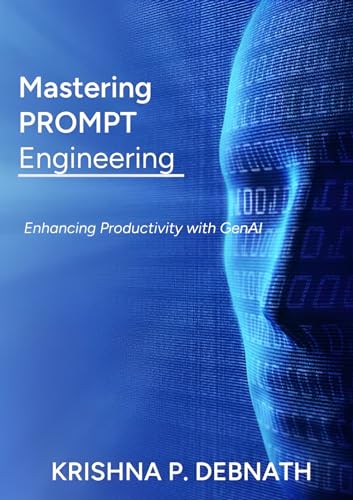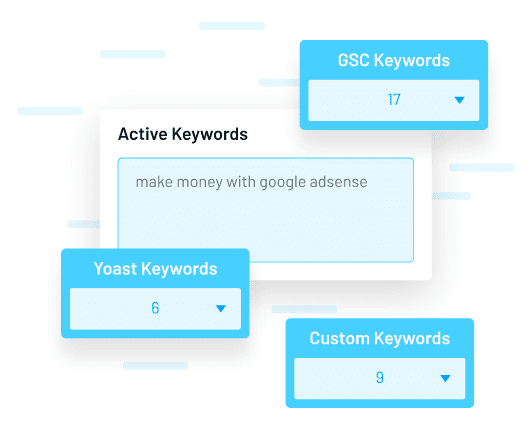
In the ever-evolving world of SEO, the ability to craft compelling titles and intros has become more critical than ever. With search engines like Google placing a growing emphasis on user experience and content relevance, the way you structure your content can make or break your visibility. Enter prompt engineering — a powerful technique that allows you to guide AI tools to produce high-quality, SEO-optimized content tailored to your audience’s needs.
This article will explore how to use prompt engineering to create effective SEO titles and intros, providing actionable steps, real-world examples, and insights into the future of this practice. Whether you’re a marketer, writer, or content creator, mastering these techniques will help you stay ahead in the competitive digital landscape.
What Is Prompt Engineering and Why It Matters
Prompt engineering is the process of designing and refining input instructions (prompts) to elicit the most accurate and useful output from an AI model. In the context of SEO, it involves crafting specific, well-structured prompts that guide AI tools to generate content that aligns with search intent, keyword optimization, and user engagement goals.
Why does this matter? Because the quality of your content is directly tied to the quality of your prompts. A vague or poorly constructed prompt can lead to generic, unhelpful content, while a well-crafted one can produce highly targeted, engaging text that resonates with your audience and performs well in search results.
For example, instead of asking an AI to “write about SEO,” a more effective prompt might be: “Write a 1,000-word blog post explaining the importance of SEO for small businesses, including practical tips for beginners and examples of successful strategies.”
By using precise language and clear objectives, you ensure that the AI understands exactly what you need, resulting in better outcomes for your SEO efforts.
How Prompt Engineering Impacts SEO Performance
The impact of prompt engineering on SEO performance is significant. When done correctly, it helps you:
- Improve Search Visibility: By creating content that aligns with user intent and includes relevant keywords.
- Enhance User Engagement: Through well-structured intros that capture attention and encourage readers to continue.
- Boost Dwell Time: By delivering content that is informative, engaging, and valuable to users.
- Increase Conversion Rates: Through optimized titles and intros that drive traffic and encourage action.
Moreover, prompt engineering supports other key SEO concepts like E-E-A-T (Experience, Expertise, Authoritativeness, Trustworthiness), as it enables you to produce content that reflects your authority and expertise.
For instance, if you’re writing about “how to use prompt engineering for SEO,” a well-crafted prompt could include elements such as:
- Target audience: Beginners and intermediate SEO professionals
- Tone: Educational and approachable
- Format: Step-by-step guide
- Keywords: “prompt engineering,” “SEO titles,” “content optimization”
This level of detail ensures that the AI produces content that is not only SEO-friendly but also tailored to your audience’s needs.
Step-by-Step Implementation Framework
To effectively use prompt engineering for SEO titles and intros, follow this structured approach:
1. Define or Audit the Current Situation
Start by assessing your current content strategy. Ask yourself:
- What are your primary keywords?
- What types of content do you currently produce?
- Are your titles and intros driving clicks and engagement?
- What gaps exist in your content?
This audit will help you identify areas where prompt engineering can make the biggest impact.
2. Apply Tools, Methods, or Tactics
Use a combination of tools and techniques to refine your prompts. Some effective methods include:
- Keyword Research: Use tools like Ahrefs, SEMrush, or Ubersuggest to identify high-intent keywords related to your topic.
- Content Analysis: Study top-ranking pages for your target keywords to understand what works and what doesn’t.
- Tone and Style Testing: Experiment with different tones (e.g., formal, conversational, authoritative) to see which resonates best with your audience.
For example, if you’re targeting the keyword “how to write SEO titles,” your prompt might look like this:
“Write a 700-word guide on how to write effective SEO titles, including tips for optimizing for search engines and user engagement. Use a friendly, approachable tone suitable for beginners.”
3. Measure, Analyze, and Optimize
Once you’ve generated content using your prompts, track its performance using analytics tools like Google Analytics or Search Console. Look at metrics such as:
- Click-through rate (CTR)
- Bounce rate
- Dwell time
- Conversion rate
Based on this data, refine your prompts to improve future results. For example, if a particular title isn’t performing well, adjust the prompt to focus on a different angle or keyword.
Real or Hypothetical Case Study
Let’s consider a hypothetical case study involving a tech blog that wants to improve its SEO performance for the keyword “AI in marketing.”
Before Prompt Engineering:
– The blog used generic prompts like “Write about AI in marketing.”
– Content was often too technical, lacked clarity, and failed to engage readers.
– Titles were generic, such as “AI in Marketing: What You Need to Know.”
After Implementing Prompt Engineering:
– The team crafted specific prompts like: “Write a 1,000-word article explaining how AI can improve marketing strategies for small businesses, with real-world examples and a friendly tone.”
– They included detailed instructions on keyword placement, structure, and tone.
– Titles became more engaging, such as “How AI Can Transform Your Marketing Strategy: A Beginner’s Guide.”
Results:
– CTR increased by 25%.
– Dwell time improved by 30%.
– Organic traffic grew by 40% within three months.
This case study demonstrates how thoughtful prompt engineering can significantly enhance SEO performance and user engagement.
Tools and Techniques for Prompt Engineering
Several tools can help you streamline the prompt engineering process and optimize your SEO content:
- SurferSEO – For keyword clustering and semantic scoring, helping you create content that aligns with search intent.
- AnswerThePublic – To discover popular questions and topics related to your keywords.
- Grammarly – For improving the clarity and readability of your content.
- SEMrush – For comprehensive keyword research and competitor analysis.
- Notion – To organize and store your best prompts for easy reuse.
These tools, when combined with effective prompt engineering, can greatly enhance your ability to produce high-quality, SEO-optimized content.
Future Trends and AI Implications
As AI continues to evolve, the role of prompt engineering in SEO will only grow more important. With advancements in natural language processing and machine learning, AI models will become even better at understanding context and producing highly personalized content.
Search engines like Google are also moving toward more sophisticated ranking algorithms that prioritize user experience and content quality. This means that the ability to craft precise, effective prompts will be essential for staying ahead of the curve.
In the near future, we may see AI tools that automatically suggest prompts based on your content goals, making the process even more efficient. However, the human element will still be crucial — your unique perspective, creativity, and strategic thinking will always be needed to guide the AI and ensure the content meets your brand’s voice and objectives.
Key Takeaways
- Be Specific: Clear, detailed prompts lead to better results. Avoid vague instructions.
- Test and Refine: Experiment with different prompts and analyze the outcomes to find what works best.
- Leverage Tools: Use AI-powered tools to streamline your workflow and improve efficiency.
- Focus on User Intent: Ensure your content addresses the needs and questions of your audience.
- Stay Ahead of Trends: Keep up with developments in AI and SEO to maintain a competitive edge.
By mastering prompt engineering, you’ll not only improve your SEO performance but also create content that truly connects with your audience. Start experimenting with your prompts today and watch your visibility and engagement grow.
Meta Title: Mastering Prompt Engineering for Effective SEO Titles and Intros
Meta Description: Learn how to use prompt engineering to create SEO-optimized titles and intros that drive traffic and engagement.
SEO Tags (5):
– Prompt Engineering
– SEO Titles
– Content Optimization
– AI in SEO
– On-Page SEO
Internal Link Suggestions:
– Parameter #5: Keyword Clustering for SEO
– Parameter #8: Content Structure for Better Engagement
– Parameter #12: Voice Search Optimization
External Source Suggestions:
– Search Engine Journal – SEO Tips
– Ahrefs Blog – SEO Best Practices
– Backlinko – SEO Guides










